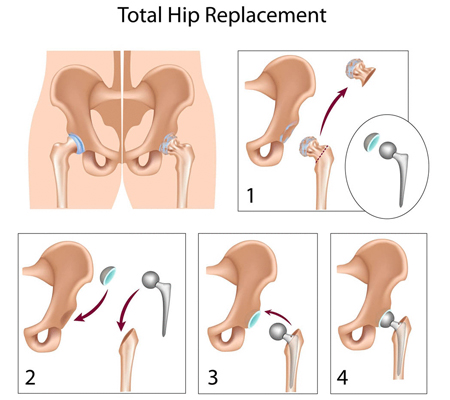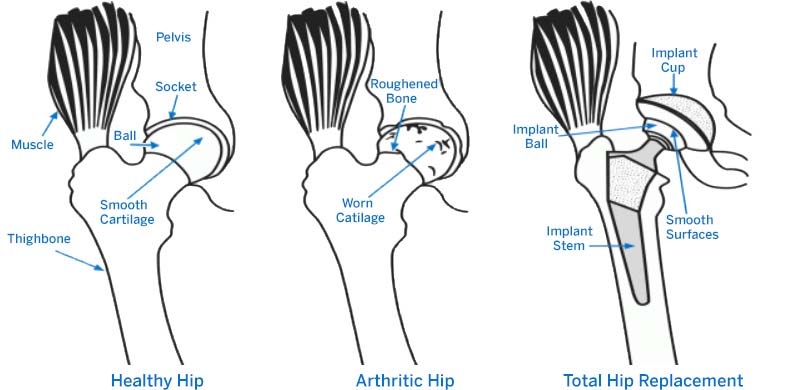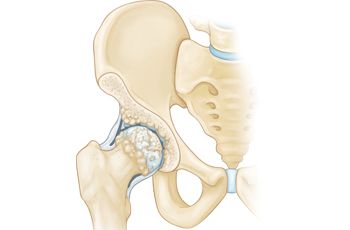Hip Replacement
Hip Replacement Surgery
Hip replacement surgery is a procedure in which a doctor surgically removes a painful hip joint with arthritis and replaces it with an artificial joint often made from metal and plastic components. It usually is done when all other treatment options have failed to provide adequate pain relief. The procedure should relieve a painful hip joint, making walking easier.
Hip replacement is the removal and replacement of portions of the pelvis and femur (thighbone) that form your hip joint. It is performed primarily to relieve hip pain and stiffness caused by hip arthritis.

What are the different types of hip replacement surgery?

Total Hip Replacement (most common)

Partial Hip Replacement

Hip Resurfacing

The three major types of hip replacement are:
Two other types of hip replacement surgeries are each generally appropriate for patients of specific age groups and activity levels:
-
Partial hip replacement (also called hemiarthroplasty) involves replacing only one side of the hip joint – the femoral head – instead of both sides as in total hip replacement. This procedure is most commonly done in older patients who have fractured their hip.
-
Hip resurfacing of the femoral head and socket is most commonly done in younger, active patients.

